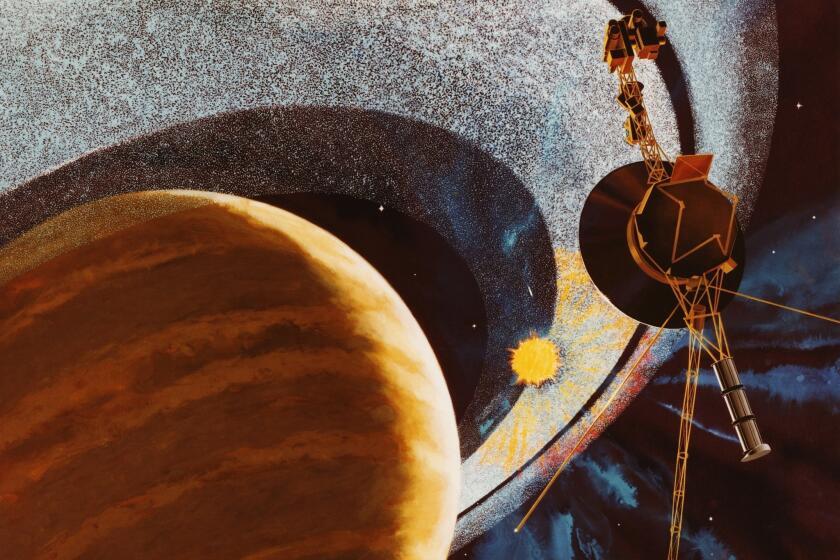JPL tries to keep Voyager space probes from disconnecting the world’s longest phone call
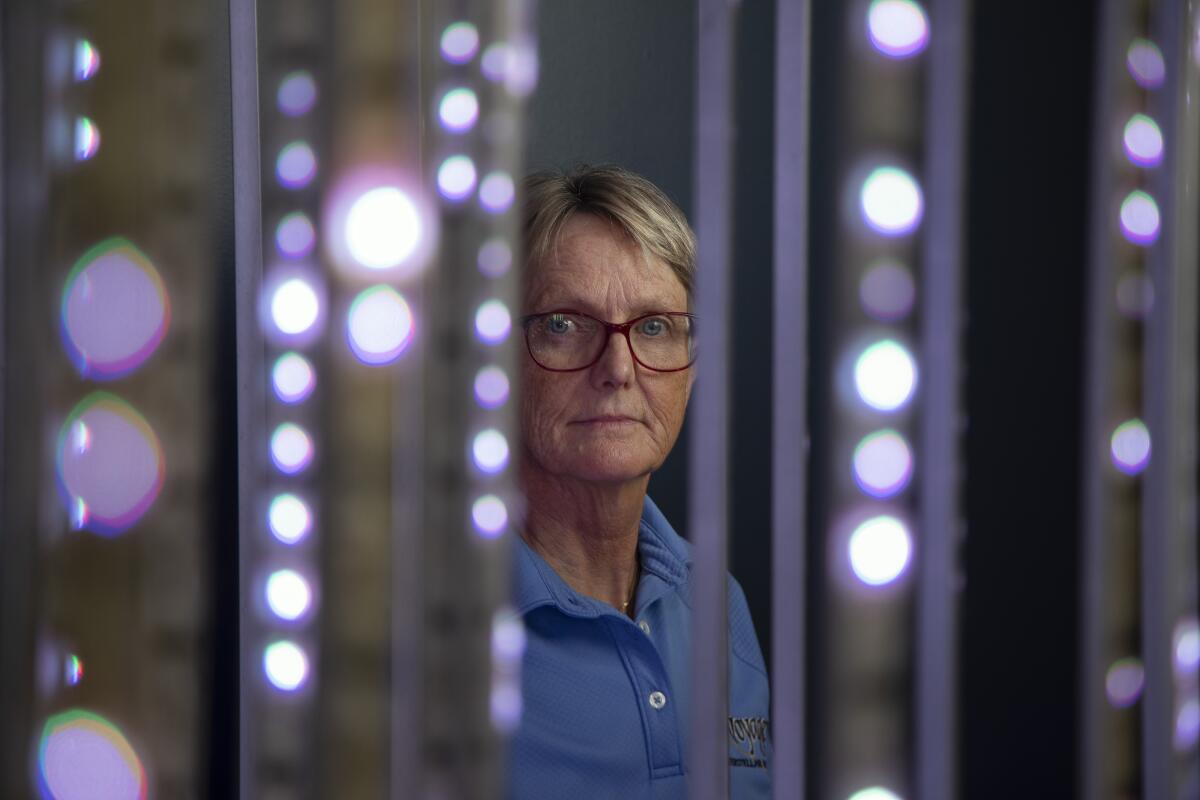
- Share via
It’s been 45 years since NASA’s Voyager spacecraft blasted off from Earth, but the twin explorers still call home from billions of miles away.
“We do the ‘Hello, are you OK?’ call once a week,” said Suzanne Dodd, project manager for the long-running mission at the Jet Propulsion Laboratory in La Cañada Flintridge.
The check-ins give Voyager 1 and Voyager 2 a chance to share their exact locations on the other side of the heliosphere, a distant region of the solar system whose magnetic field shields Earth and the other planets from galactic cosmic rays.
It was during one of these calls in May that Voyager 1 sent a perplexing signal.
Data from the computer that controls its orientation “came back in jumbled bits, jumbled ones and zeros,” Dodd said. And it continued to look like gibberish.
“It’s like the check engine light turned on,” added Bruce Waggoner, a JPL engineer who oversees the operations of the Voyager missions. “We could not isolate it to a specific area.”
This computer is critical because it keeps Voyager 1’s communication antenna pointed firmly in Earth’s direction. Any malfunction or loss of power would cut off humanity’s longest-distance phone call forever.
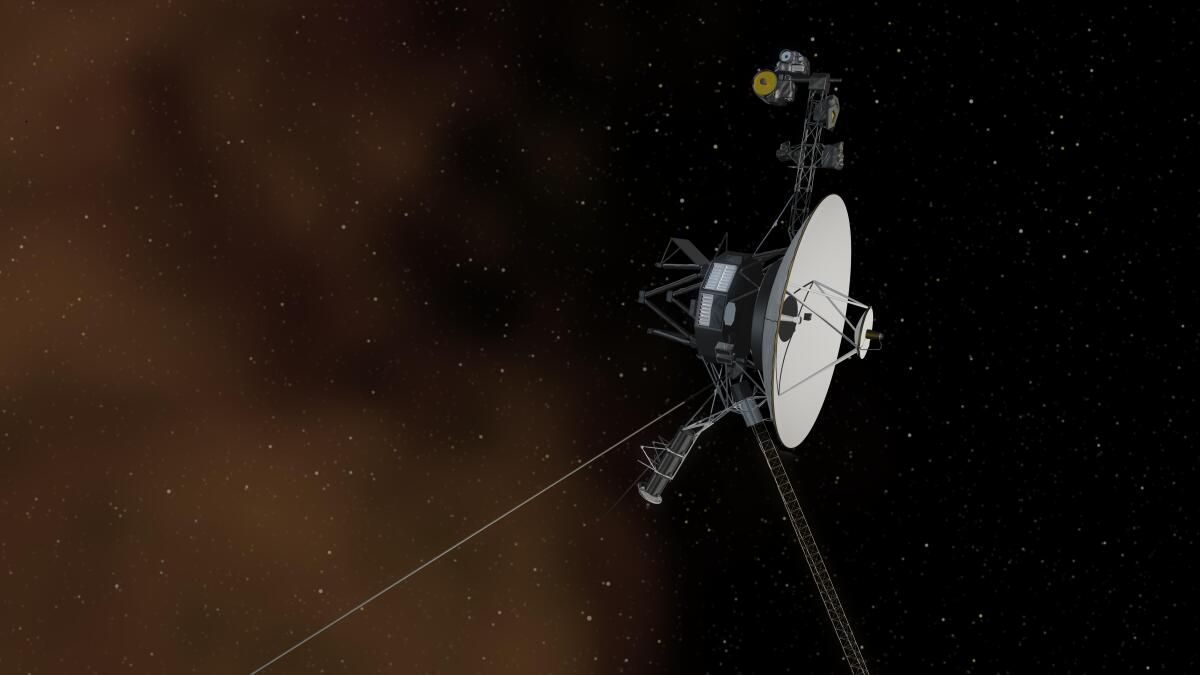
Voyager 1 is more than 14 billion miles from Earth. It launched from Kennedy Space Center on Sept. 5, 1977, arrived at Jupiter in 1979 and reached Saturn in 1980. And then it just kept going.
By 1998 it had become the most distant man-made object, flying farther from the sun than the Pioneer 10 space probe. It left the heliosphere and entered interstellar space in 2012 (though scientists weren’t able to confirm this until 2013). Voyager 2 followed in 2018.
NASA confirmed Thursday that after 36 years of space travel and months of heated debate among scientists, Voyager 1 entered interstellar space more than a year ago.
Bill Nye, chief executive of the Planetary Society, called the two spacecraft the “vanguard of human intellect and treasure,” ranking them alongside the decoding of the human genome and the formulation of the theory of general relativity as premier scientific achievements.
“What’s unique about the Voyager missions is how much they’ve inspired people for half a century,” he said.
Voyager 1 is now so far away that it takes almost 22 hours for transmissions from the craft to reach us — traveling at the speed of light.
They’re worth waiting for. The dispatches include valuable scientific data about interstellar magnetic fields, cosmic rays and plasma waves.
Transmissions from the Voyagers are received by the Deep Space Network, a trio of colossal radio antennas in California’s Mojave Desert, Australia and Spain. They’re spread out across the globe to ensure at least one of them can be aimed at any point in the sky.
All three sites have a 230-foot antenna built specifically to listen to the Voyagers. The farther they go, the harder they are to hear.
The Voyagers’ radios transmit signals at a mere 23 watts of power. By the time those signals reach Earth, they’re reduced to the faintest of whispers, just one-billionth of a watt.
The spacecraft are getting weaker too. Every year their batteries lose up to 4 watts of power due to the decay of plutonium-238, the radioisotope that fuels them. (Solar energy isn’t an option because the sun is so far away.)
Survival is a series of trade-offs. With a finite source of energy, what can be sacrificed? What can be preserved?
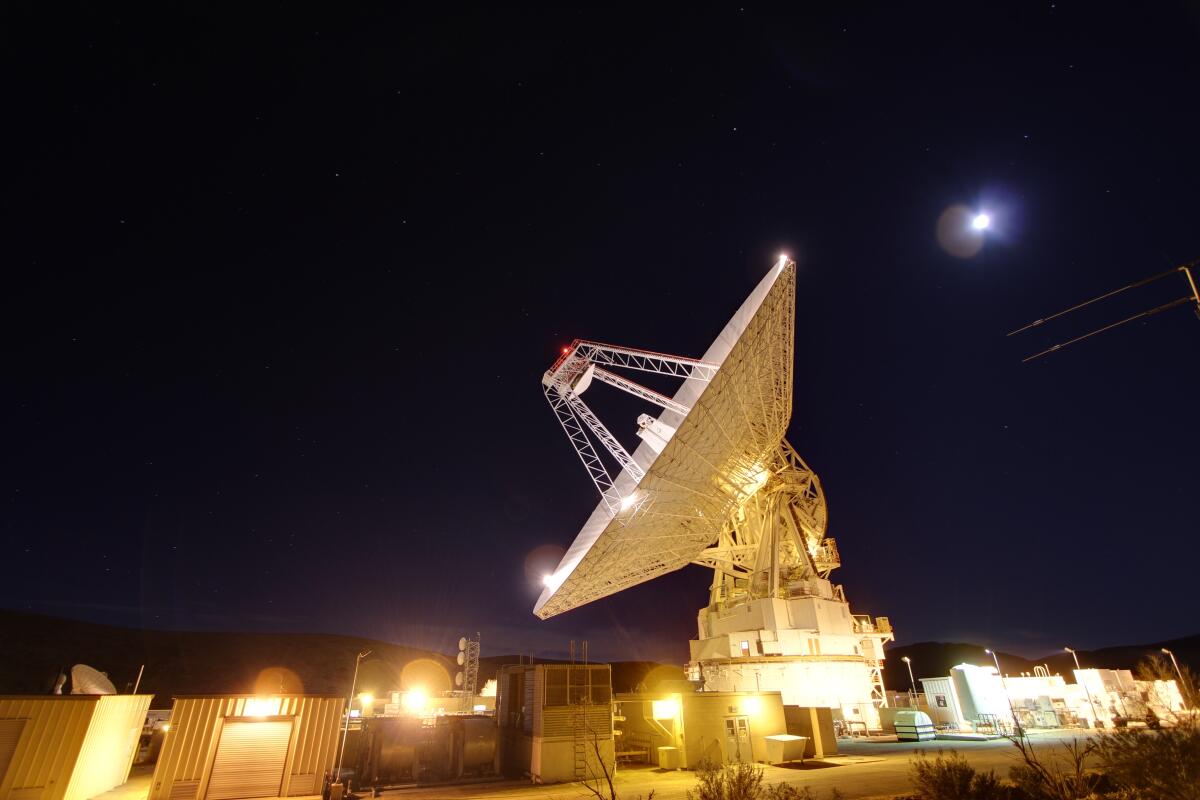
From their remote locations, the two Voyagers form the perfect laboratory — in fact the only laboratory — for studying the interface between a star and its surroundings.
“It’s really intriguing to me to be able to go out into that medium and make measurements and understand what’s going on out there,” said Bill Kurth, a heliophysicist at the University of Iowa who studies interstellar plasma waves. “It helps us understand what the environment around other stars might be like.”
But it’s not easy. The signals are so faint that even the 230-foot antennas of the Deep Space Network are too small to hear them. To capture his plasma wave data, Kurth uses them in tandem with three 112-foot antennas, “and that’s just barely enough,” he said.
Adding to the challenge is that the network is also juggling communications with dozens of other spacecraft, the Mars rovers and now the James Webb Space Telescope. It communicates with the Voyagers only for a few hours at a stretch.
This is not optimal since the Voyagers have limited capacity to store the measurements they make, forcing them to transmit their data in a continuous stream. Information that’s missed can be filled in by context, like the way a baseball fan who missed a few at-bats can tell what happened based on who is on the field, the score, the number of outs and the crowd reaction.
Voyager, the space triumph that nearly wasn’t
All conversations with the Voyagers are faint, intermittent and slow. If there were an emergency, Waggoner said, “we would have to send a command, wait two days or more, and then see what it did.”
So when abnormalities like the one that started in May arise, scientists need to be extra alert.
The first irregular signals suggested something had gone wrong with the attitude control computer that orients Voyager 1 in space. But the team knew the computer was actually doing its job — had the antenna been pointed in the wrong direction, the Deep Space Network would have seen a degradation in signal strength.
That’s why Dodd wasn’t too unsettled by this problem. Nevertheless, sorting it out was still a high priority.
Perhaps the high-energy galactic cosmic rays that Voyager 1 is no longer protected from have knocked atoms off its semiconductor chips and affected the electronics, Dodd said. Or maybe the decades-old computing system is glitching due to degradation over time.
After several months of investigation, the JPL team identified the culprit this week: Voyager 1’s attitude control system started sending its transmission data through a broken computer that garbled the data. The problem was fixed by instructing the spacecraft to go back to using the correct computer.
Why Voyager 1 made the switch in the first place is still a mystery, and one worth solving since it suggests something else isn’t quite right aboard the spacecraft.
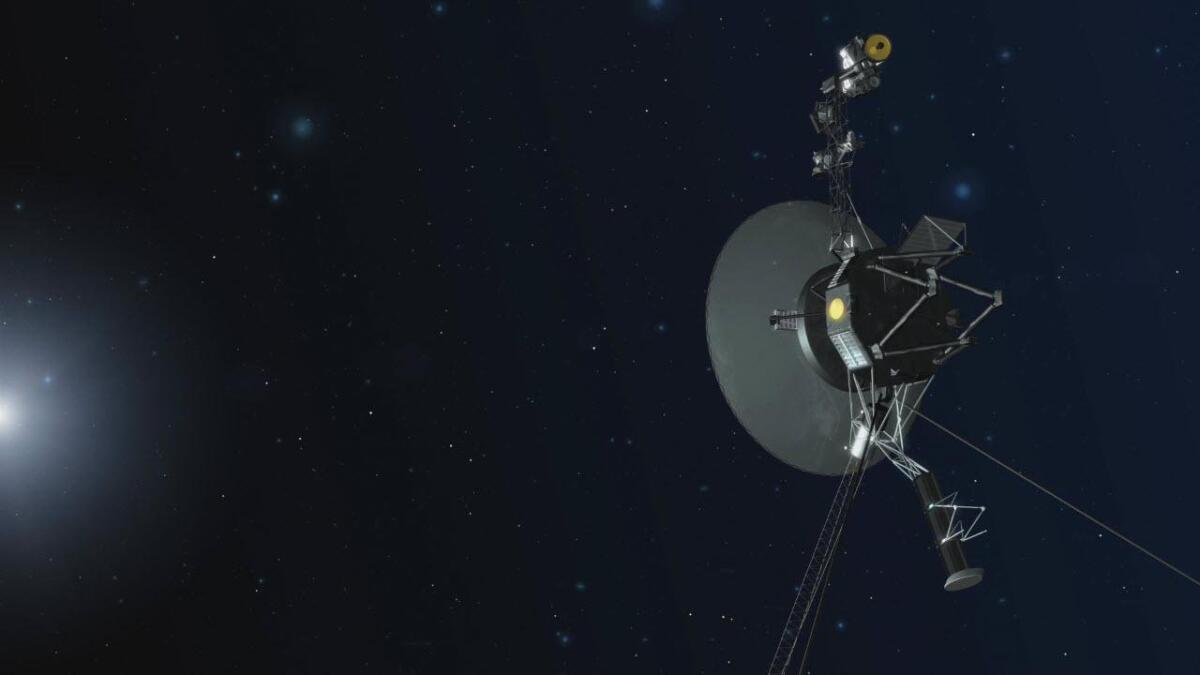
Even if this problem turns out to be inconsequential, Dodd and her JPL colleagues are aware of one mission-ending problem that is inevitable — loss of power. It forces them to play a remote game of deep-space survival.
“There is a constant tension between instrument power and thermal management systems on Voyager,” Dodd said.
Voyager 1’s instrument heaters use a lot of energy, so in 2012 scientists started turning some of them off to preserve power for communications and other critical systems. Luckily, the instruments continued to return data despite operating in much chillier conditions than they were designed for.
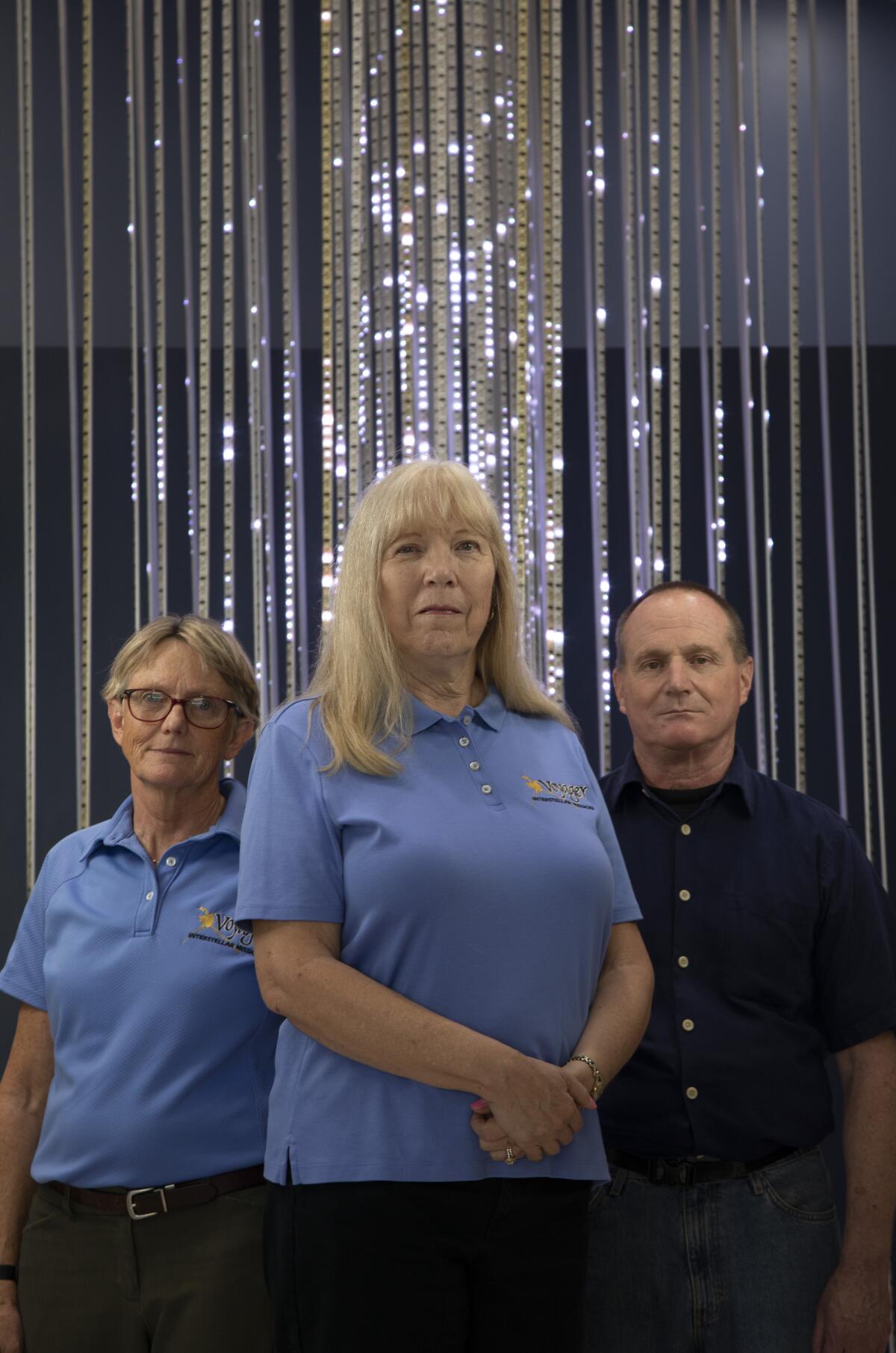
Over time, mission scientists had to get more creative. They shut down the thrusters that make extremely fine adjustments to control antenna orientation in 2019 and used the more energy-efficient spacecraft navigation thrusters to move the entire probe instead.
“We have harder decisions going forward,” Dodd said. Individual science instruments may need to be turned on and off, operating a few at a time.
Voyager 2, which is 12 billion miles away, faces the same battery issues. In 2020, a failsafe mechanism triggered by two power-hungry systems unexpectedly operating at the same time shut off all its science instruments for several days. (They’re working fine now.)
Dodd is hopeful the spacecraft will keep talking to us for five more years. “I want to have that big party for the 50th,” she said, an anniversary the mission would hit in 2027.
It’ll be a tough day when the line to the last of the Voyagers goes dead.
“We’ll try everything we can to figure out what’s wrong,” said JPL planetary scientist Linda Spilker, the deputy project scientist for the Voyager mission. “But at some point, we’ll just have to realize, OK, maybe something really broke this time.”

